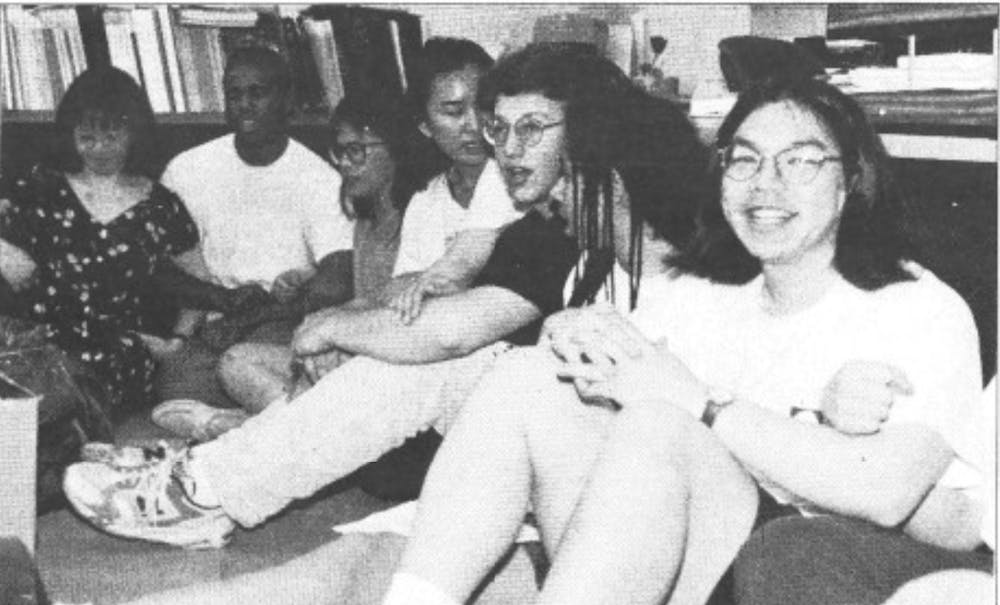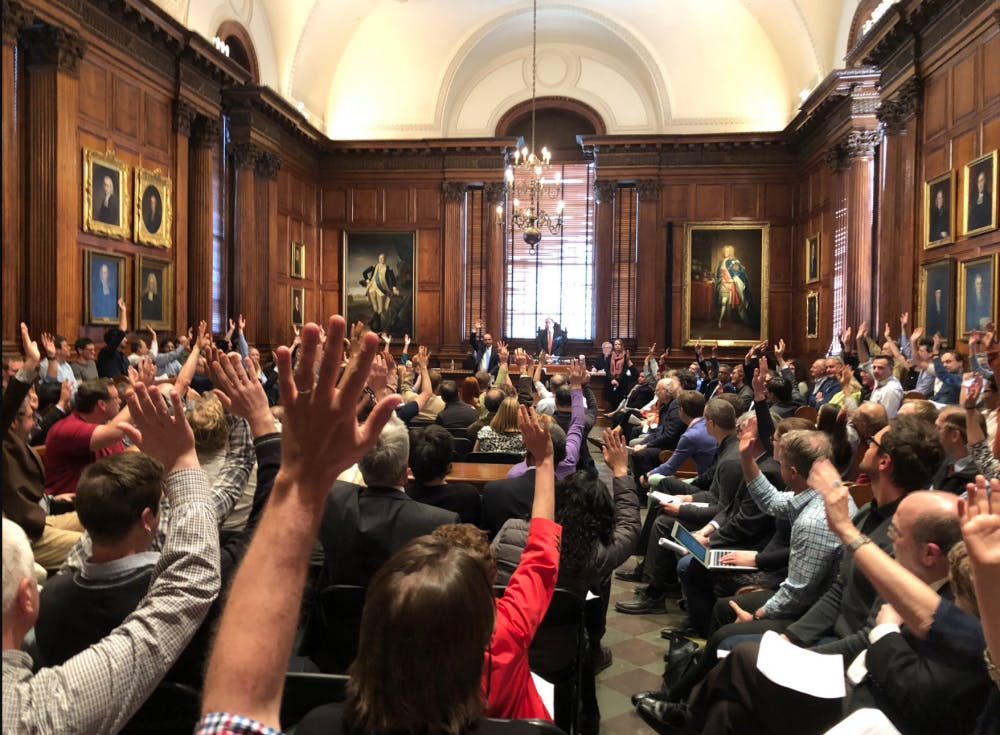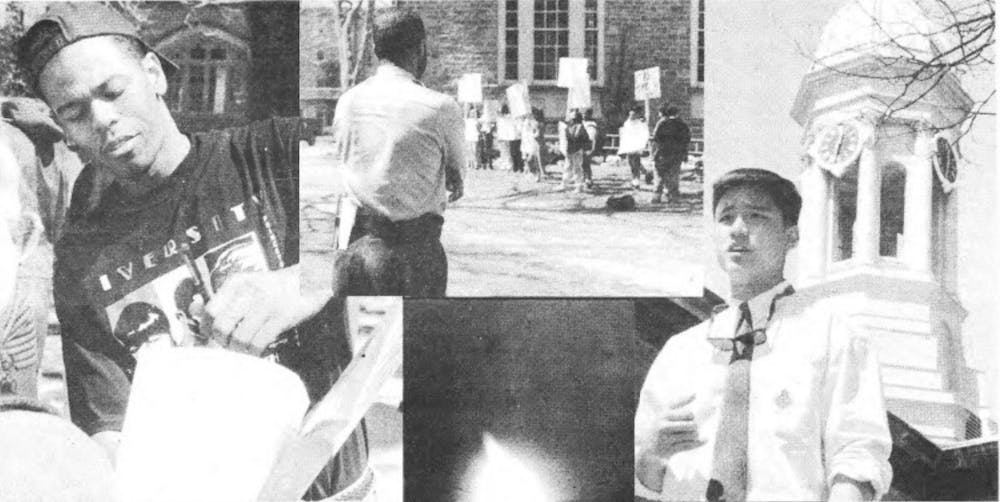In 1988, Asian American students met with then-University-President Harold Shapiro GS ’64 to request an Asian-American studies program. 30 years, one sit-in, a 14-page report, and 692 signatures later, the University approved the creation of an Asian American Studies certificate program in April 2018.
Still, the establishment of the program is far from the end of the fight for Asian American representation in academia on campus.
“I think the Asian American Studies at Princeton as a larger project is ongoing — it has to be maintained, it has to be expanded,” said Anne Cheng ’85, professor in the Department of English and the Programs in Gender and Sexuality Studies and American Studies.
“It has got an institutional foothold,” she added, “but then we really need to build on it.”
Following the rise of violence against the Asian American community across the nation earlier this year, the Asian American Students Association (AASA) began demanding support for the Asian community with urgency. In part, AASA leaders have called for expansion of the Asian American Studies program.
“In light of the numerous attacks on elderly Asian Americans that’s been occurring all throughout 2020, AASA recognized a need to connect and utilize the power of college students,” explained Jennifer Lee ’23, co-president of AASA.
As part of advocacy efforts by the Intercollegiate Asian Pacific Islander Desi American (APIDA) Coalition (ICAC), an alliance of student groups from nearly 50 universities across the nation, AASA has called on the University administration to “openly address the ongoing violence and racism, and support Asian and Asian American community members.”
The ICAC’s list of demands includes that “universities must hire and retain Asian American faculty, offer courses in Asian American studies, and install ethnic studies programs.”

While the ICAC statement is intended for an intercollegiate context, AASA is specifically asking that the University make a strong commitment toward maintaining the Asian American Studies program, according to Kesavan Srivilliputhur ’23, co-president of AASA.
“Asian Americans are so often forgotten. For us, there’s the worry that this is just a temporary flare up, and then we’ll go back to being forgotten in five years,” Srivilliputhur noted. “We want the University to make a financial and public commitment towards Asian American Studies.”
“While the program itself is robust and we are growing in the number of certificate takers, it still needs more financial support,” Lee added. “On an administrative level, nothing speaks louder volumes than a commitment to an annualized budget, and to hiring more tenured professors.”
Currently, Princeton’s Asian American certificate program is staffed by three professors who also have teaching commitments in other fields. Since the field is interdisciplinary, professors in the program have stated the need for more teaching staff to allow students pursuing the certificate a wider variety of courses to choose from.

“Even though I think it’s amazing that we have three faculty now, it’s actually still not enough,” Cheng said. “Asian American Studies is a very diverse field ... so we need to have a good amount of those fields covered.”
In a statement to The Daily Princetonian, University spokesperson Ben Chang explained that a fourth professor focused on Asian American studies was set to join the faculty for the 2021–22 year but withdrew for personal reasons.
“We continue, nonetheless, our efforts to build Asian American Studies, including the hiring of professors, distinguished visitors, and lecturers,” he said.
Chang added that the University recognizes the impact that acts of violence and harassment across the country have had on the Asian and Asian American communities at Princeton and beyond and welcomes input from Asian student leaders.
“The University welcomes continued conversations with students from the AASA — we value their perspectives on these important issues,” Chang wrote.
Thus far, AASA leaders said their demands have made little headway. While they have been in contact with both ODUS and the Office of Communications, they are waiting to be put in contact with various University committees focused on Diversity, Equity, and Inclusion with whom they were advised to speak.
“It often feels like the University has created a perfect system to stall change,” Srivilliputhur noted. “While the committees may represent our best shot, they will take time, and this is unfortunately not something that we can make happen overnight.”
The current standstill from the University is reminiscent of the 30 years it took students and professors advocating for the creation of an Asian American studies program to see their demands fulfilled. Much of AASA’s work today is built on the work of past activists.
“I’m always reminded of the legacies that we stand on and how many alumni have stood in our shoes in the past. But there is so much left to do, and moving forward we hope to pave that path for other students,” Lee noted.
“Part of what Asian American student groups can do is to ensure that [people know that] the fight for Asian American courses was a long battle fought,” said Paul Nadal, professor in the Department of English and the Program in American Studies.
In 1992, the Asian American Student Task Force released a 14-page report to request a program. Apart from the introduction of a singular Asian-American history course in 1995, this request was not fulfilled.
In April 1995, 17 students staged a sit-in at Nassau Hall to demand the establishment of Asian American and Latino studies programs. They occupied the office of Shapiro’s administrative assistant, whom University officials alleged the group “pushed” out of her office.
The sit-in continued for 36 hours, during which student negotiators beyond Nassau Hall coordinated efforts and other students organized large rallies outside of the building.

A group of students sit outside President Shapiro's office in a push for more Asian American and Latino Studies courses
Courtesy of David Mejias
On the lawn, students addressed a growing crowd and denounced the existing Asian American studies and Latino studies curricula. A petition supporting the demands of the students inside Nassau Hall was passed around.
“Diversity, we must! Ethnic studies, or bust,” the crowd outside chanted.
During the sit-in, Shapiro referred to the alleged pushing of a staff member as “deeply offensive.” However, he noted that the demonstration would not dissuade the University from their “continuing efforts … to develop courses and appoint faculty in the areas of Asian American and Latino studies.”
The University soon created committees to expand the number of Latino Studies and Asian American Studies professors. However, despite the University’s promise that this was an “area of priority,” expanding the programs was a slow-moving process.
The Program in Latino Studies, now Program in Latin American Studies, would not be established until nearly 14 years after the protests. Even compared to this timeline, progress toward an Asian American Studies program lagged behind.
In 2008, Cheng, Professor of History Emeritus Hendrik Hartog, and Professor of Creative Writing Chang-rae Lee submitted an alumni petition, backed by 692 signatures, for an Asian-American studies program.
This petition had little impact on the slow pace of progress towards the establishment of the certificate program. As a result, in 2011, AASA formed a committee dedicated to the establishment of an Asian American studies program — which they formally proposed in 2013, and continued pushing for throughout the decade.
Seven years later, in April 2018, faculty voted for the creation of the program.

Faculty vote to create the Asian American Studies program
Photo via the @Princeton Twitter account.
Even so, those who had fought for the program felt that the establishment alone was only a small step in the right direction. Hartog, former director of the American studies program, told Princeton Alumni Weekly following the faculty vote that the program had “a very thin set” of course offerings, and that more faculty were needed.
At the onset, the program included a total of three course offerings. In the coming 2021–22 Fall semester, the program will have four.
“The biggest frustration is the lack of professors and the lack of courses offered every semester,” explained Susan Baek ’23, a certificate student.
While taking classes in the program like HIS 270: Asian American History with Professor Beth Lew-Williams, Baek noted that all of her preceptors were of non-Asian American descent. Lew-Williams told her the demographic inconsistency among the faculty stems from there being no Asian American history doctorate program, so preceptors are drawn from the general history department.
“From my viewpoint, because the program is so new from the institution, it feels very student heavy,” Baek added. “As always, the burden is put on students who need this stuff in the first place and shouldn’t need to ask so late.”
To many, the fight to further develop the Asian American studies program, as well as other ethnic studies programs, marks a push towards a more inclusive definition of American history.
“History has failed us, for the most part,” Lee explained. “Perhaps the best way to rectify that is through an institutional change that can happen only when administrators provide the attention necessary to these issues.”








